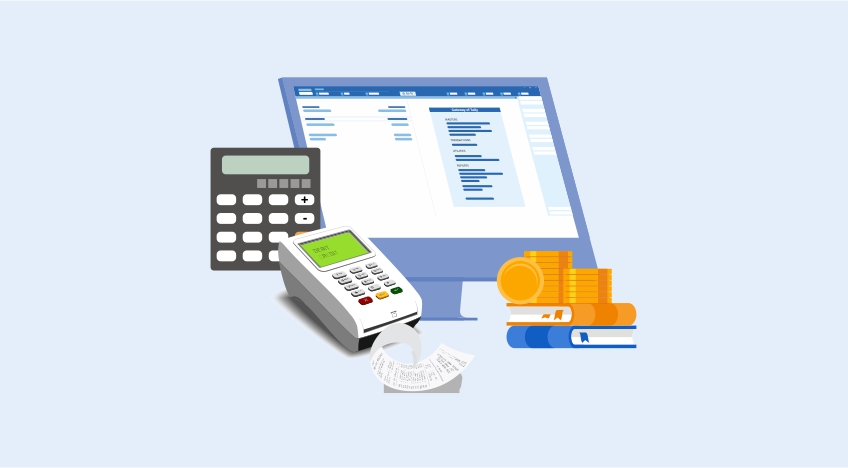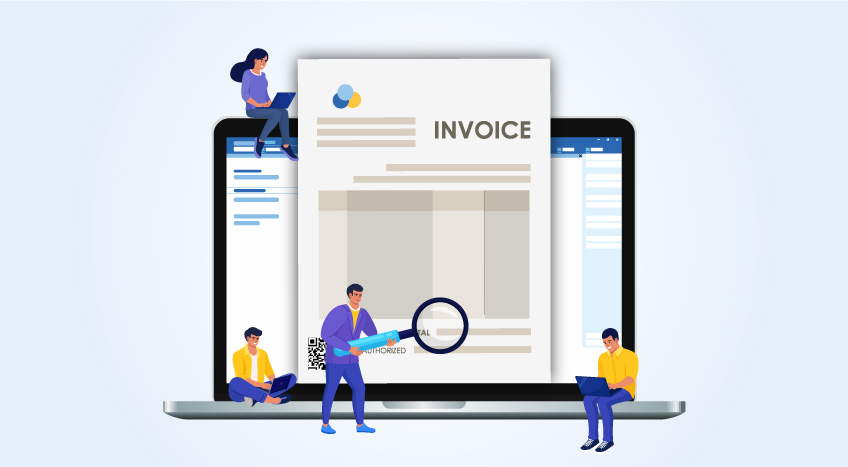- What is e-invoicing in Uganda?
- Why is e-invoicing important in Uganda?
- How to issue e-invoices in Uganda?
- What information must be present in an e-invoice?
- How to choose the method of e-invoicing?
- How to prepare your business for e-invoicing?
What is e-invoicing in Uganda?
E invoice in Uganda refers to an electronic document that can be issued by VAT-registered taxpayers only. An e-invoice is a proof that a sale has taken place through the Electronic Fiscal Receipting and Invoicing Solution (EFRIS) server. An e-invoice contains crucial information such as the details related to the sellers and buyers, goods and services, VAT, and so on. An e-invoice is not synonymous with an e-receipt as the latter is issued by a person who is not registered for VAT. The Uganda Revenue Authority (URA) made it mandatory for all VAT-registered businesses to issue e-invoices and encouraged other businesses to issue e-receipts starting from 1st January 2021.
E-invoicing ensures that every invoice issued by any business is valid. Companies that are registered to do business in Uganda have to use the EFRIS platform to submit their e-invoices. The invoice is then sent to the URA and approved based on its authenticity. Registered taxpayers must log into the portal and validate either using the QR code or the e-invoice number or e-receipt number. Once the validity of the e-invoice is confirmed by the system, you will be shown the verification details along with the e-invoice or e-receipt copy.
Why is e-invoicing important in Uganda?
E-invoicing is important for many reasons:
- It consists of the actual number of sales and prevents sales suppression which was a challenge earlier.
- It prevents non-issuance or false issuance of receipts and invoices by certain businesses whereby there was no actual movement of goods and services.
- E-invoicing will prevents fraudulent refund claims made by businesses.
- It prevents claims that are not verified or cannot be verified because the business has not stored the records properly.
- It prevents the use of multiple business records that were erroneously stored.
- E-invoicing encourages transparency as taxpayers will no longer be able to hide certain records for tax purposes.
- It addresses the challenge of matching the input and output tax whereby many taxpayers got away with paying much less than they should have.
- It prevents people from tampering with the VAT mechanism by selling invoices previously issued to others and thereby claiming input taxes.
- E-invoicing ensures every business issues correct invoices and receipts only after validation from the URA’s system.
How to issue e-invoices in Uganda?
It is not mandated that only a specific type of system is used to issue invoices and receipts but it must be acceptable by the URA. You can issue an e-receipt or an e invoice in Uganda in many ways. You can use the client application, electronic fiscal devices or EFDs, the URA web portal, or the USSD. Alternatively, you can use a business management software such as TallyPrime to issue compliant e-invoices that have all the mandatory fields required on an e-invoice. In such a case the system-to-system connection must be established to ensure the communication between them can occur without any problems.
Let us say that you already have an e-invoicing system in place. When you make a sale, the sale details will be stored in the invoicing system and they will then be encrypted for security purposes before being sent to the URA. When EFRIS receives the sale details, it will first decrypt the data and then turn it into an e-invoice or e-receipt. It will also generate an invoice number, QR code, and a verification code. It will then encrypt the e-receipt or e-invoice and then send it back to your invoicing system. All this happens in real time so that an e-invoice or e-receipt can be generated instantly. When this is done, you can print the e-invoice or e-receipt.
What information must be present in an e-invoice?
An e-invoice in Uganda must have the following details:
- Business Registration Number (BRN) or the National Identification Number (NIN) of both the buyer and the seller
- Verification code
- Buyer’s mobile number
- Type of document (copy or original)
- Date of fiscalization
- Time of fiscalization
- Issuing mode (online or offline)
- Seller’s invoice or receipt number
- Quantity of items
- Tax Identification Number (TIN) of both the buyer and seller
- QR code
- Particular person making the sale
- Invoices issued so far
- Goods and services description
- Fiscal document number
- Goods and services total price
- Net amount
- Buyer and seller commercial names
- Gross amount
- Tax amount
- Addresses of both the buyer and seller
How to choose the method of e-invoicing?
If you have registered for VAT then you need to start issuing e-invoices. As discussed earlier, there are many options to do so. But how do you choose? If you are a micro taxpayer, then you can use the portal, EFD, USSD, or the client app for issuing e-invoices. If you are a small taxpayer then you can use any of the previously mentioned options and also the system-to-system method. Medium taxpayers will do well with the EFD, client app, portal, or the system-to-system option to issue e-invoices. Large taxpayers are better off by opting for options such as the client app, system-to-system, and the URA portal to issue e-invoices.
How to prepare your business for e-invoicing?
You can prepare your business for e invoice in Uganda by doing the following:
Use an e-invoicing solution
An e-invoicing solution is the best option to issue e-invoices in Uganda. A robust solution such as TallyPrime is perfect for businesses who want to issue e-invoices seamlessly. It will enable you to issue e-invoices in seconds with all the required customization such as your business logo and other vital details. You can also easily store your business details and invoices in the system while also controlling who gets access to which portion of your business. This extra security ensures your business details are always in the right hands. TallyPrime is powering more than 2 million businesses worldwide and it includes other salient features such as accounting, payroll, banking, inventory management, and much more.
You must remember that training your employees is just as important to ensure proper e-invoicing so they are on the same page as you. They are valuable people who will ensure compliance and when they are made part of everything you do, your business can perform better and reach new heights. You must also train them to use the e-invoicing system. If you are using TallyPrime then this won’t require a lot of time because TallyPrime is user-friendly and it has a plethora of guides and step-by-step guides to help at every point. You also have experts you can get in touch with whenever you need.
Stay abreast with requirements
You must ensure you are complying with the URA requirements by issuing correct invoices at all times. The URA has guides and FAQs to ensure you understand all that is needed to be done from your end so there are no errors and problems along the way. It is best if you ensure you thoroughly study everything that has been released from the URA including its social media handles for the latest developments. You should also ensure you know all the details that must be included in every invoice including the tax details that must be included such as the VAT and so on. You should know which products and services are VAT exempted, which are zero-rated, and which ones are taxable.
Read More:










